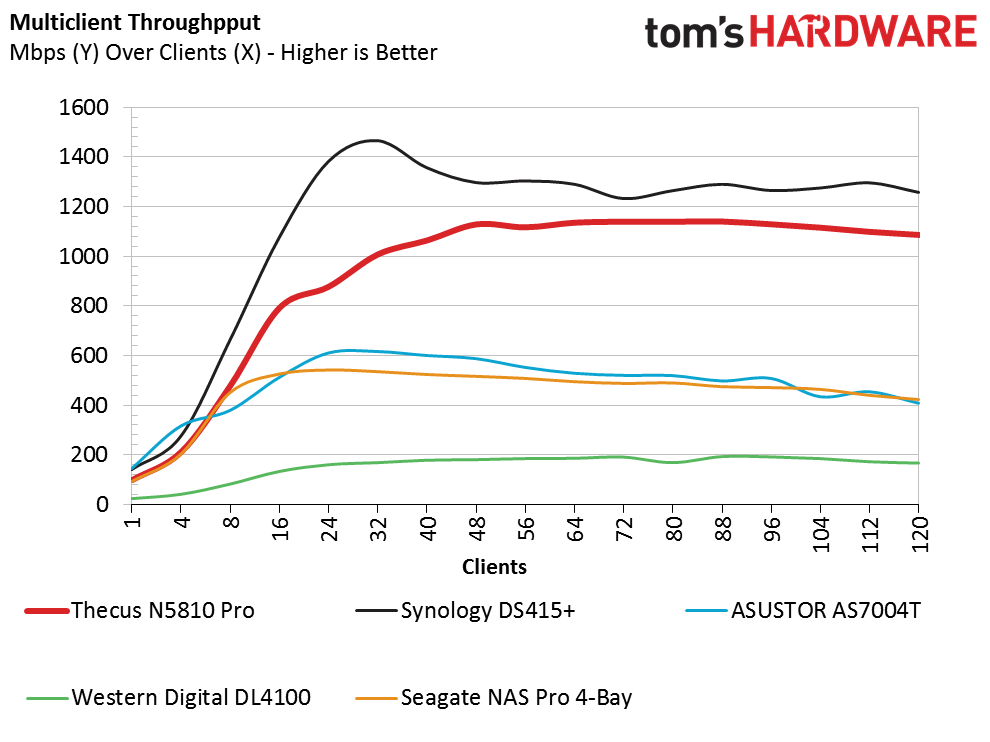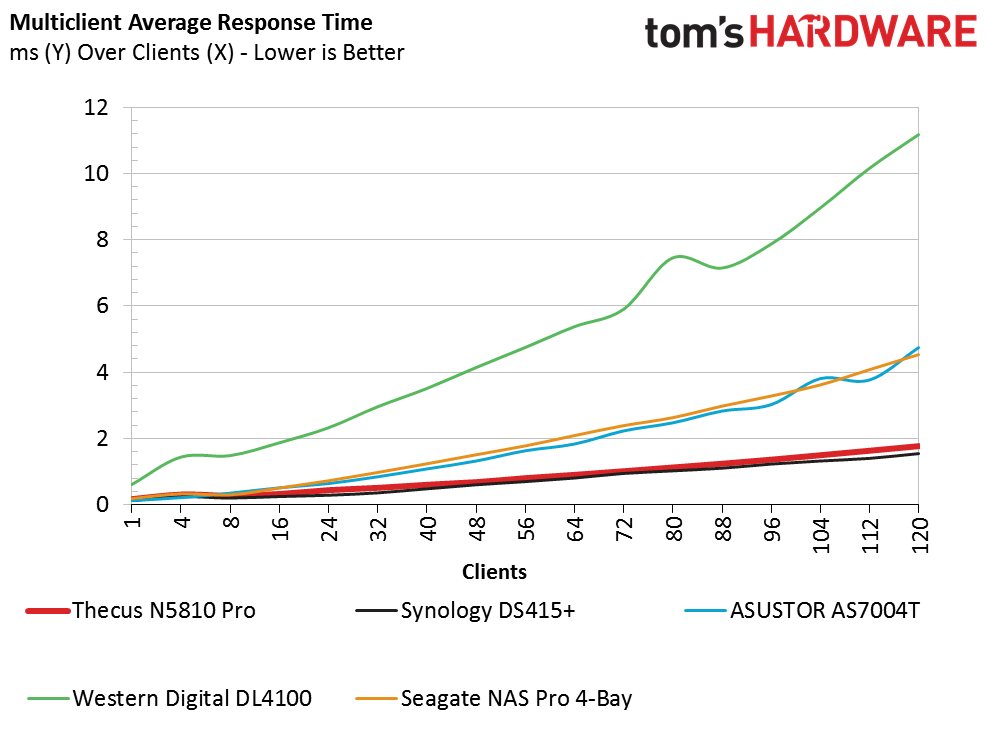Thecus N5810 Pro NAS Review
Thecus' N5810 Pro is the only NAS in its price class with a built-in battery backup that allows the system to save your data even after the power goes out.
Why you can trust Tom's Hardware
Multi-Client SMB Performance


The multi-client test is straightforward, even though it's complicated to configure and run. We use 120 real gigabit Ethernet ports from hosts that run custom software. Each system runs a trace-based test recorded from Microsoft Office. This mimics a real office environment where no single machine pushes the performance limits of the NAS. But as the number of clients increases, so does the load. Consequently, this benchmark is a real challenge for all NAS products. Many of the operations are random in nature, and even the sequential portions become random as the number of clients increases. Systems needs to be efficient with multiple streams to do well.
The first chart shows total throughput performance, while the second shows latency. We feel that the latency test carries more weight since it has a direct relationship with the user experience in this large office environment. Thecus' N5810 Pro performs particularly well thanks to its host processor and file system.
System administrators can optimize the stripe level of the array to deliver a better experience. Not all NAS products allow users to adjust this, so its availability is notable on the N5810 Pro. We used the default 64KB setting to get balanced performance with random and sequential data.
Get Tom's Hardware's best news and in-depth reviews, straight to your inbox.
Current page: Multi-Client SMB Performance
Prev Page Single-Client SMB Performance Next Page Single Client iSCSI Workloads
Chris Ramseyer was a senior contributing editor for Tom's Hardware. He tested and reviewed consumer storage.